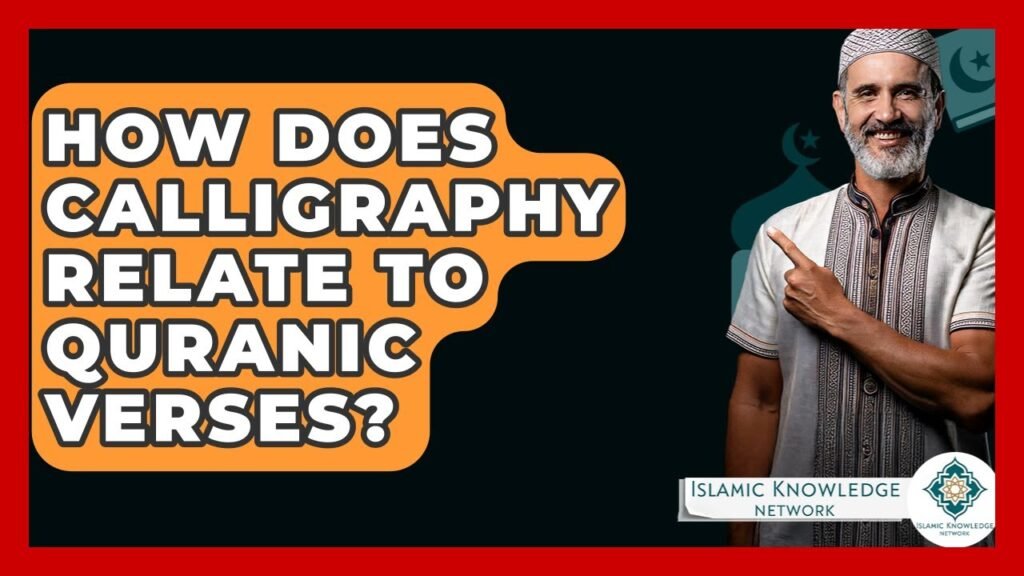You are here to read: How is Calligraphy Connected to Quranic Verses? – A Thoughtfully Written Guide Offering Spiritual Wisdom and Travel Advice for Every Pilgrim who is going on holy journey of Hajj or Umrah.
How Does Calligraphy Relate To Quranic Verses? – Islamic Knowledge Network
Calligraphy, often regarded as the art of beautiful handwriting, holds a significant place within Islamic culture, embodying both aesthetic beauty and profound spirituality. In the context of Quranic verses, calligraphy serves as a visual manifestation of the sacred text, transforming the written word into a form of divine expression. The intricate designs and flowing scripts not only enhance the readability of the Quran but also invite contemplation and reverence, reflecting the deep connection Muslims hold to their faith.
At Airlink Hajj and Umrah, we celebrate this relationship between art and spirituality by providing insights into Islamic traditions and practices. Our blog is a treasure trove of updates on Hajj and Umrah, blending essential travel information with rich discussions on cultural and religious topics, such as the significance of calligraphy in conveying the messages of the Quran. By understanding this artistic form, pilgrims can deepen their appreciation of Islamic heritage, enriching their spiritual journey to some of the most sacred sites in the world. Join us as we explore the beauty of calligraphy and its integral role in the expression of Quranic wisdom.
How is Calligraphy Connected to Quranic Verses?
Calligraphy, particularly in the Islamic tradition, is an art form revered for its beauty and spiritual significance. The connection between calligraphy and Quranic verses is profound, as the Quran, believed to be the word of God, is often transcribed in artistic scripts that elevate its message. This practice not only makes the text visually appealing but also serves as a means of reverence, transforming the sacred words into art. Well-crafted calligraphy reflects the beauty of the divine message, making it accessible and engaging to the faithful.
Historically, Islamic calligraphy has evolved alongside the Quran, with various styles such as Naskh, Thuluth, and Diwani emerging to encapsulate its essence. Many calligraphers dedicate their work to reproducing verses from the Quran, ensuring that the words resonate deeply within the hearts of the believers. This artistic expression serves as a form of worship and enhances the appreciation of the verses, inspiring reflection and devotion.
At Airlink Hajj and Umrah, we not only celebrate the intricate bond between calligraphy and the Quran but also provide regular updates on Hajj and Umrah. Engaging with this divine art form can enrich your spiritual journey, making each pilgrimage experience even more profound. Explore our blog for insights and inspiration as you prepare for these sacred rites.
You're at the middle of this awesome post at AirlinkHajjandUmrah.com through: How is Calligraphy Connected to Quranic Verses?. Keep reading, it gets better!
FAQ on How is Calligraphy Connected to Quranic Verses?
FAQs: How is Calligraphy Connected to Quranic Verses?
1. What is the significance of calligraphy in Islamic culture?
Calligraphy is an essential art form in Islamic culture, serving as a means to express the beauty of the Arabic language and convey spiritual messages, particularly through the transcription of Quranic verses.
2. How does calligraphy enhance the understanding of Quranic texts?
Through artistic representation, calligraphy imbues Quranic verses with aesthetic value, making the text more visually appealing and engaging, which can enhance contemplation and understanding.
3. Are there specific styles of calligraphy associated with Quranic verses?
Yes, styles like Kufi, Naskh, and Thuluth are commonly used for writing Quranic verses, each offering a different aesthetic and functional quality suited for various contexts, such as manuscripts, wall art, and religious decoration.
4. Can anyone practice calligraphy related to Quranic verses?
While anyone can learn calligraphy, it is often encouraged to approach the transcription of Quranic verses with respect and proper training to ensure it reflects the sacredness of the text.
5. How has the practice of calligraphy evolved in relation to the Quran?
The practice has evolved from traditional techniques and styles to contemporary interpretations, yet the reverence for the Quranic text remains central, influencing modern artists and calligraphers to innovate while respecting traditional forms.
That wraps up How is Calligraphy Connected to Quranic Verses?. Thanks for sticking with us till here! Share this: How is Calligraphy Connected to Quranic Verses? with your friends.
Check our homepage at Air Link Hajj & Umrah for more awesome updates.
Some interesting posts are: 1: Umrah Mubarak, 2: When is Umrah closed 2026?, 3: When does Umrah start after Hajj 2026?
Mushu, an experienced Saudi Arabia traveler and writer, shares insightful tips and spiritual reflections to enhance Hajj and Umrah journeys for fellow pilgrims. He has been to Makkah and Madina from 2016 to 2023 many times and his posts will reflect this.







